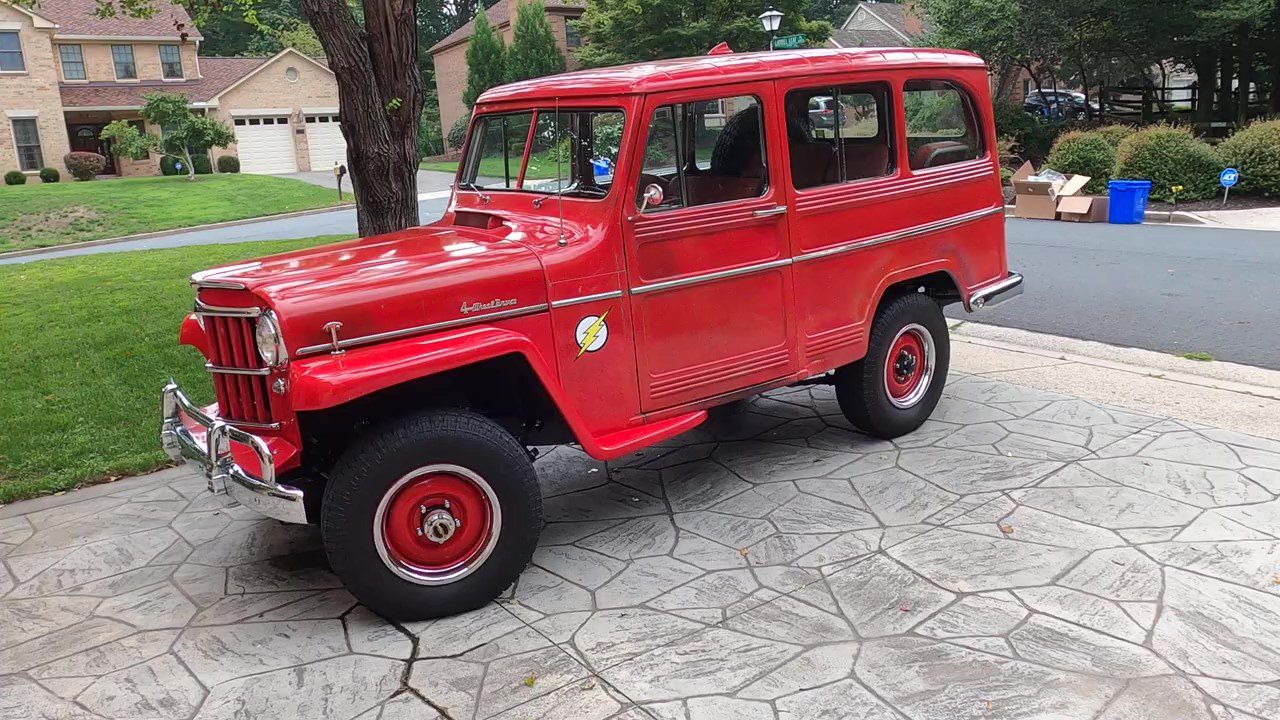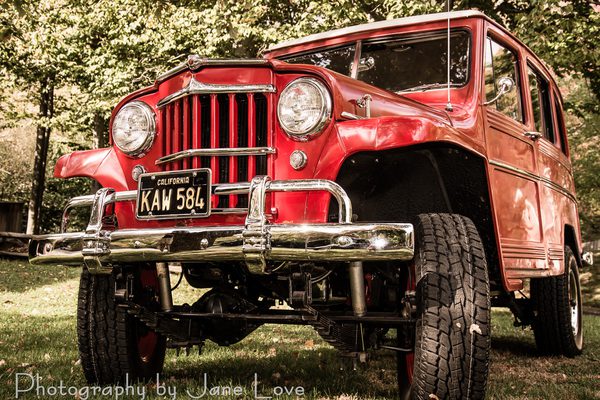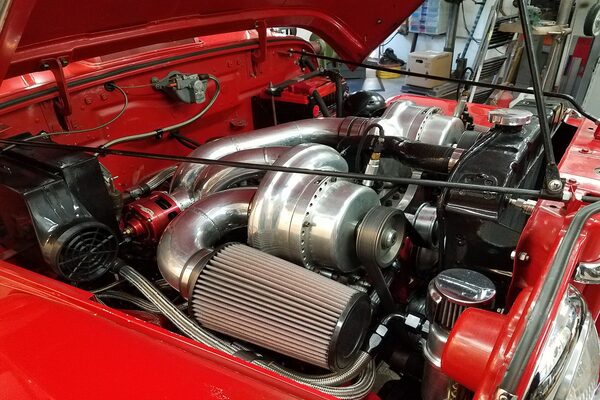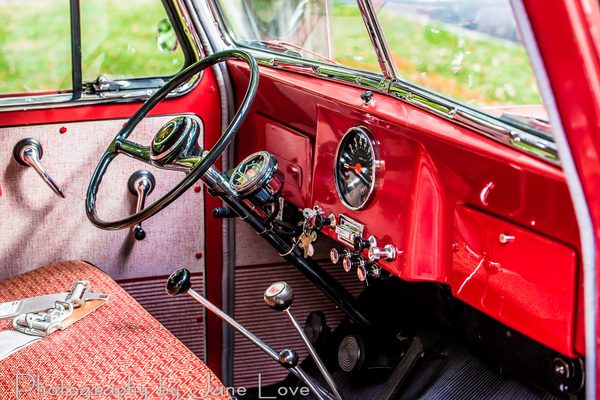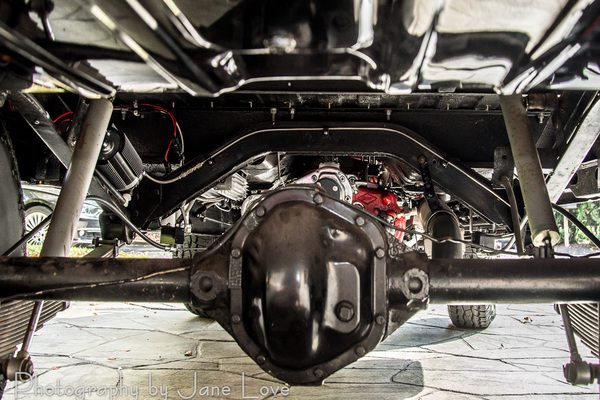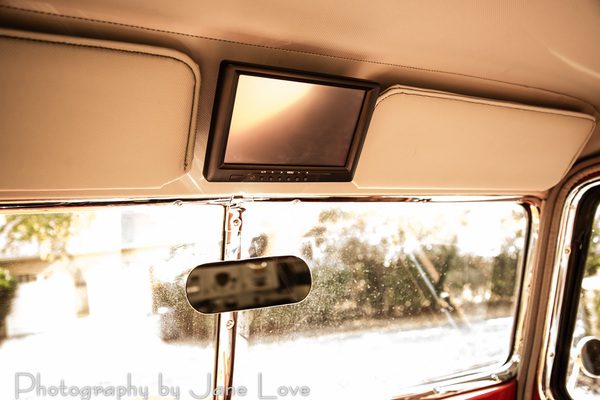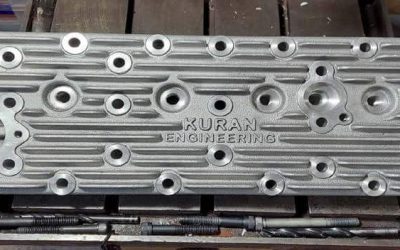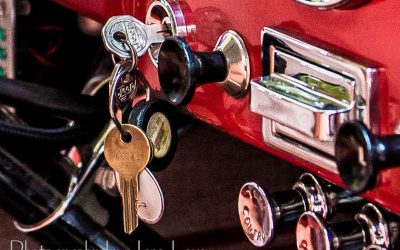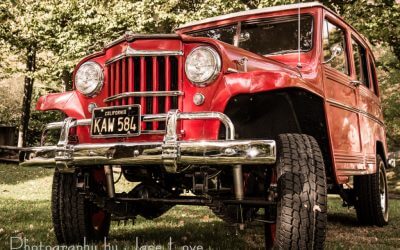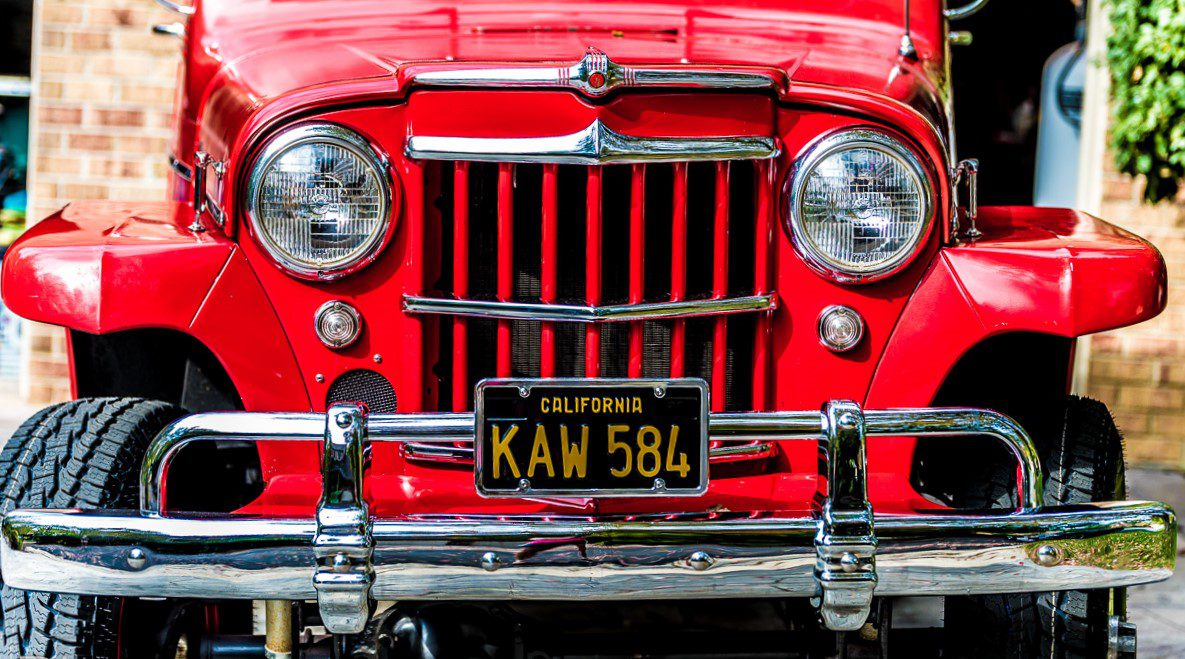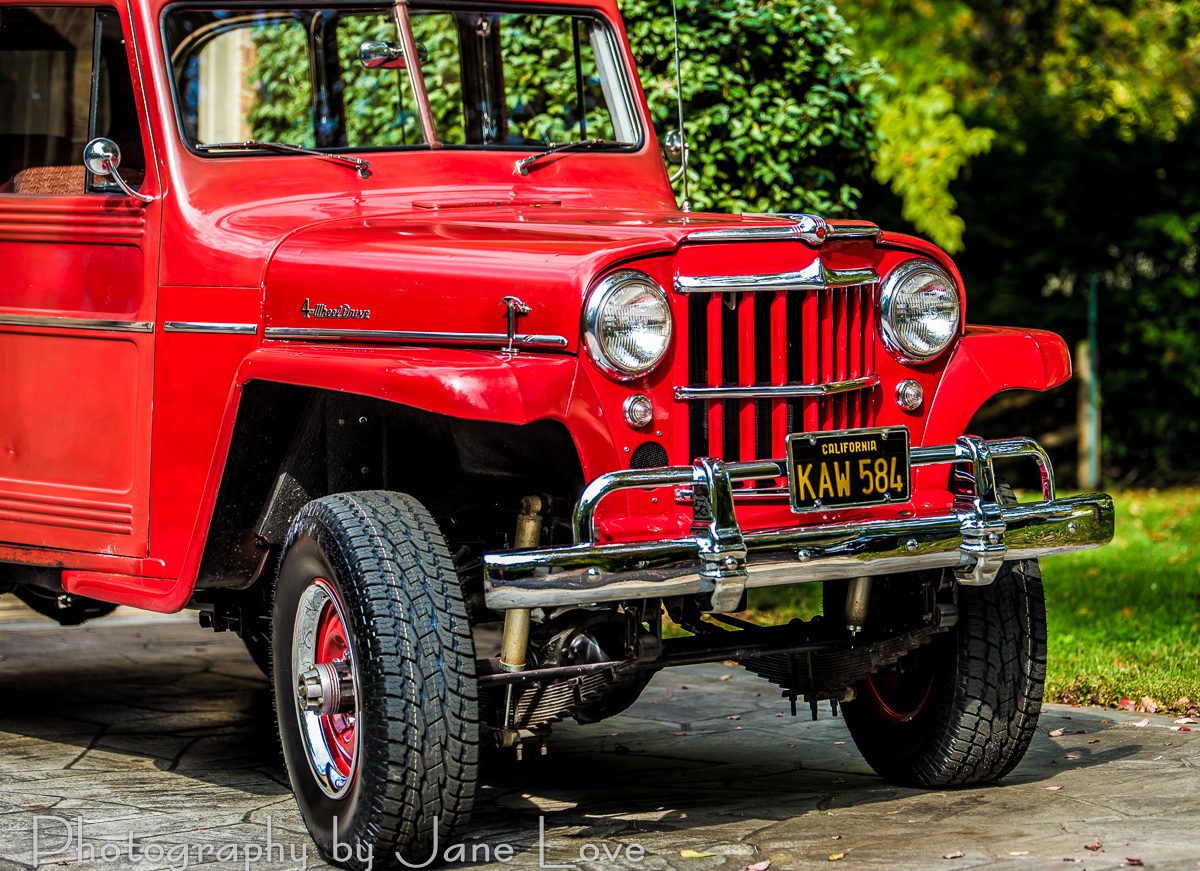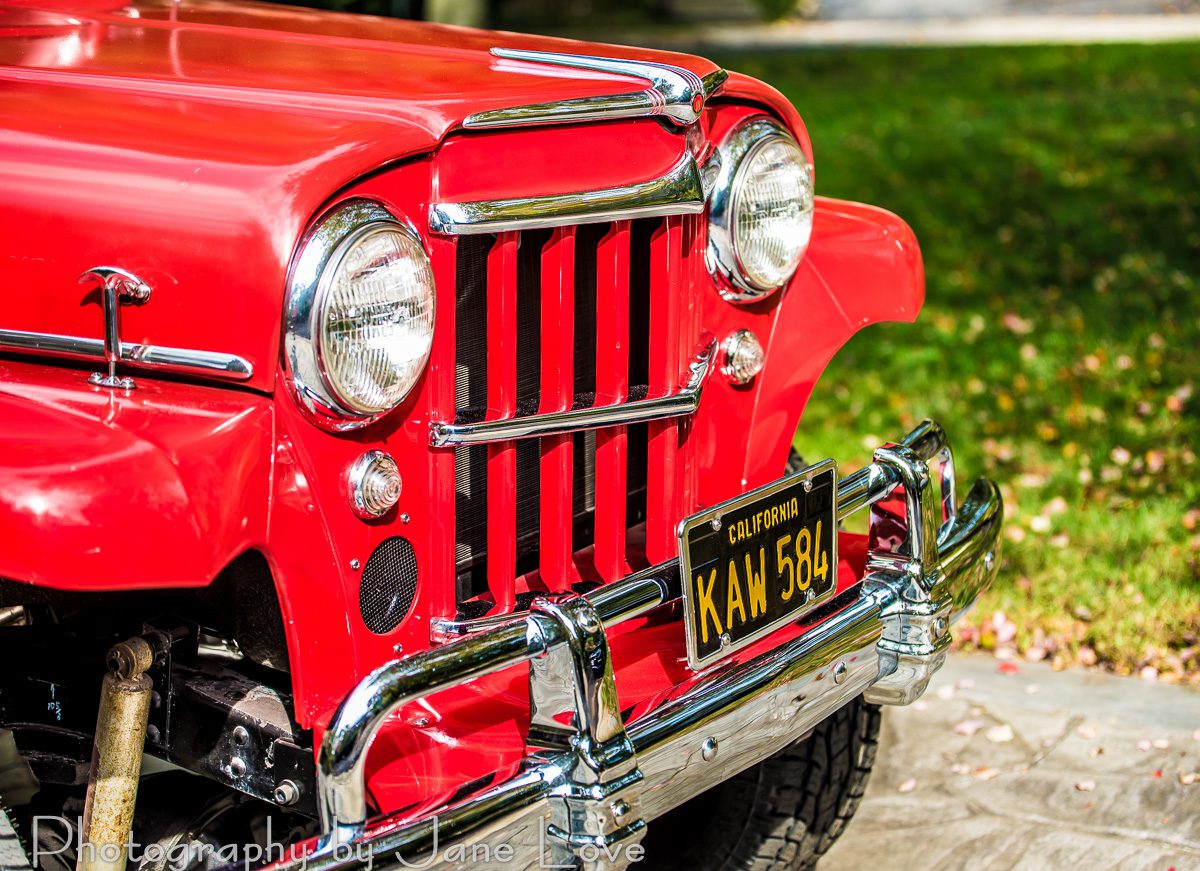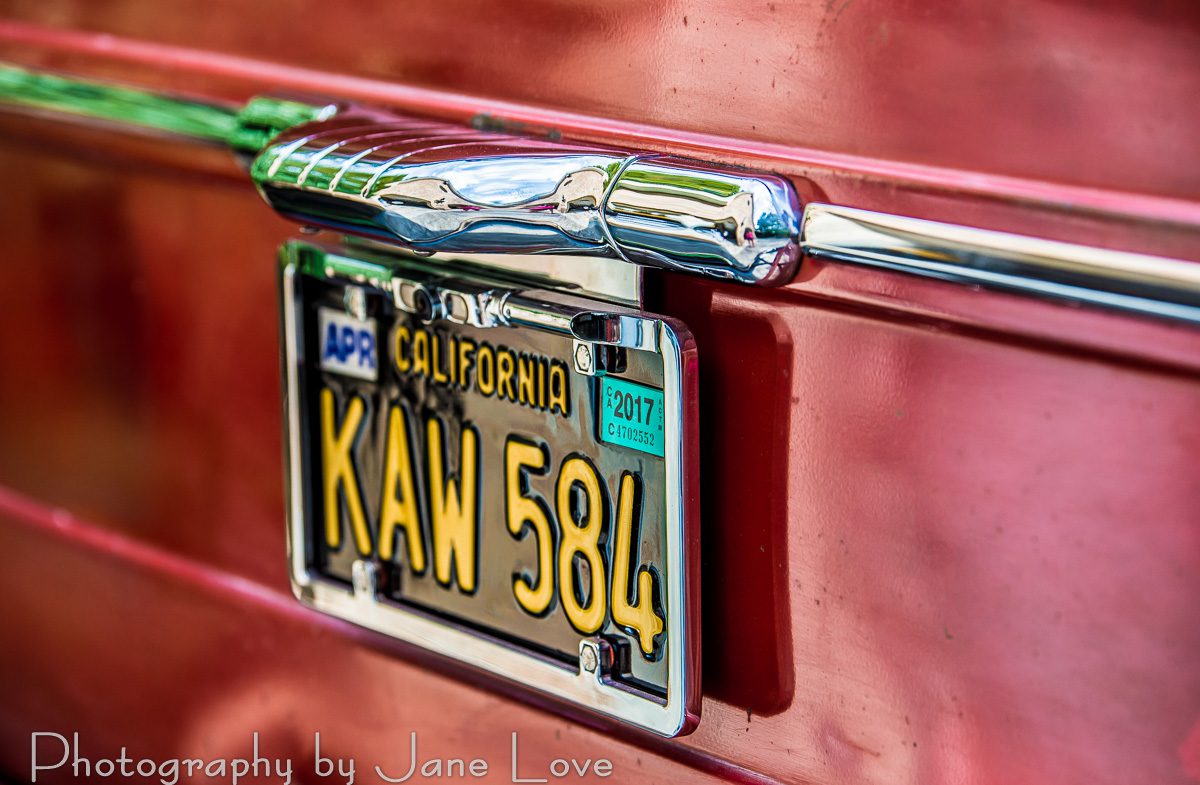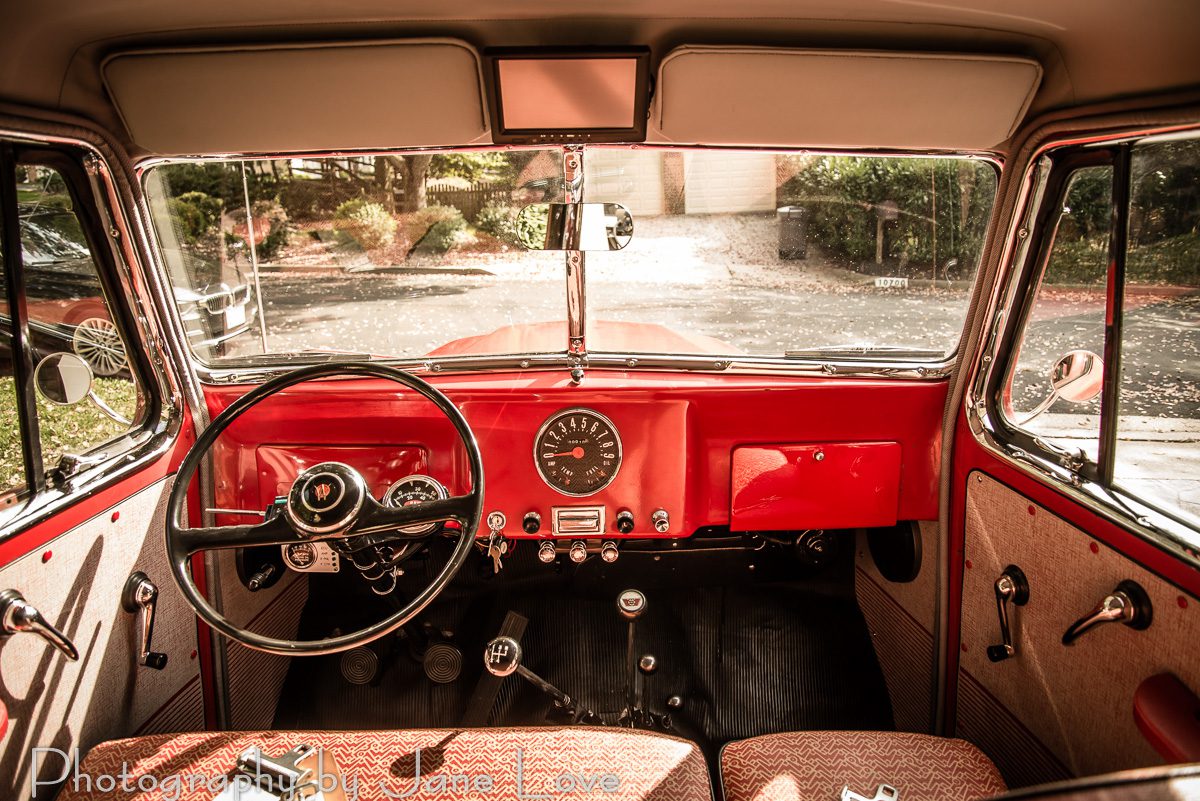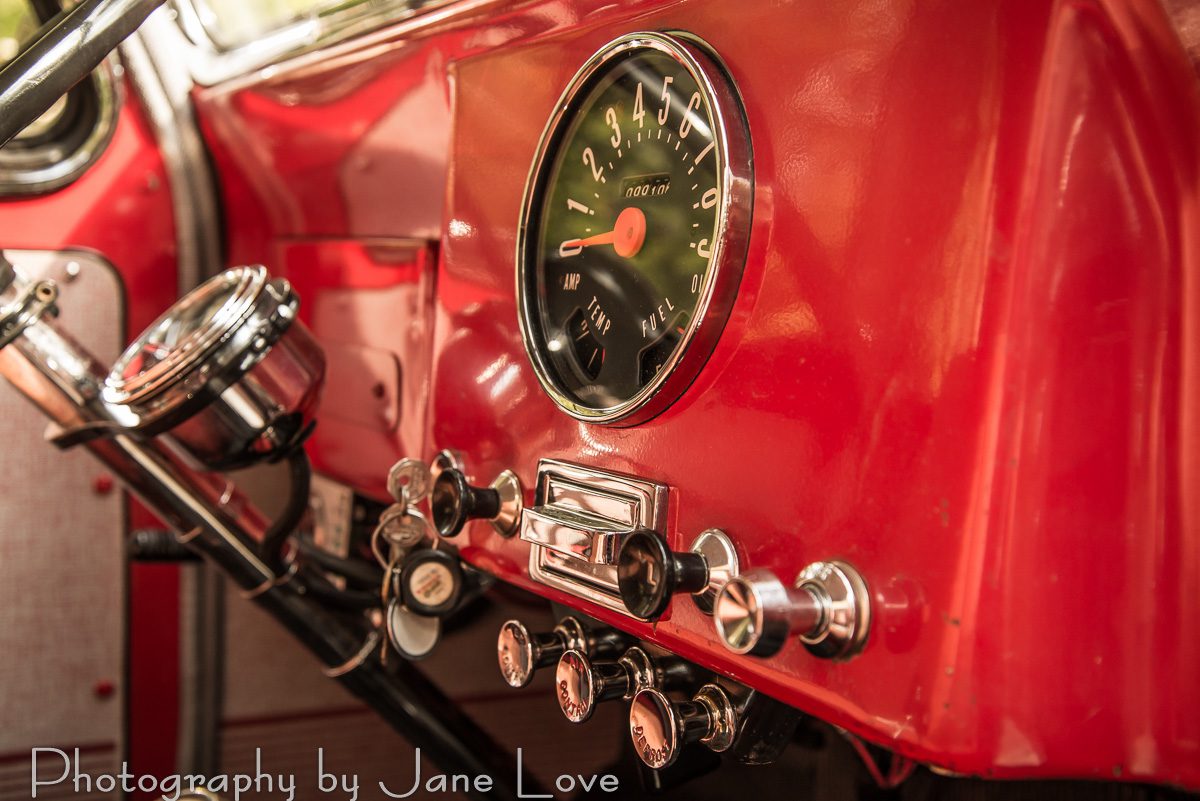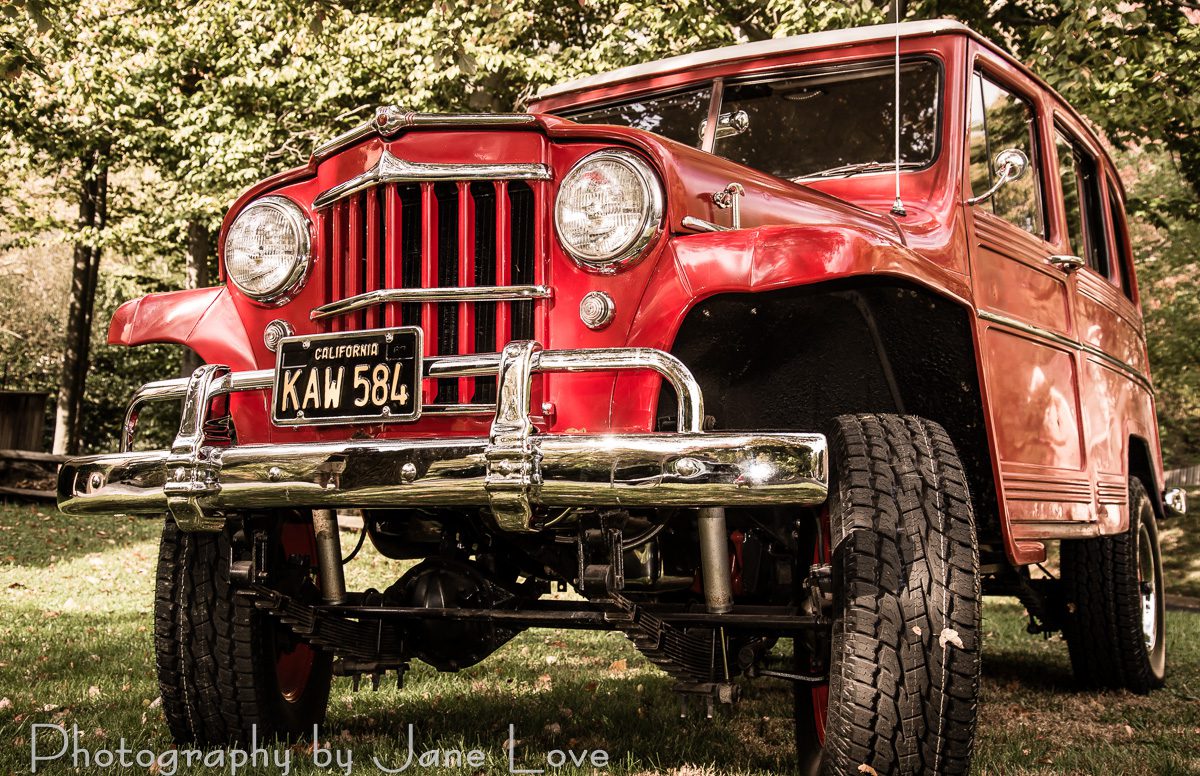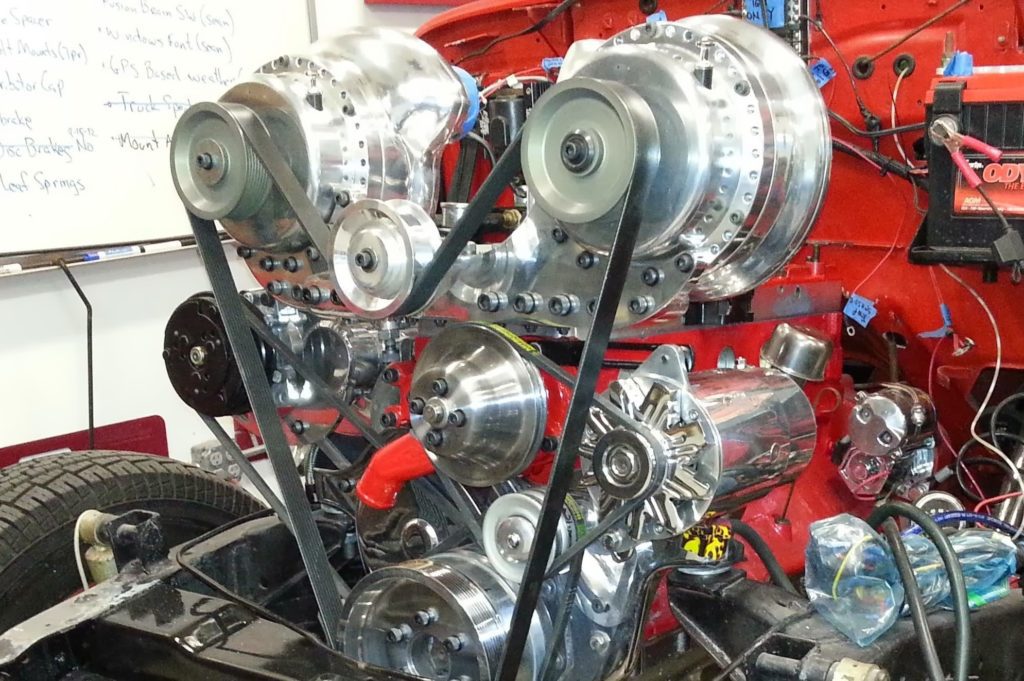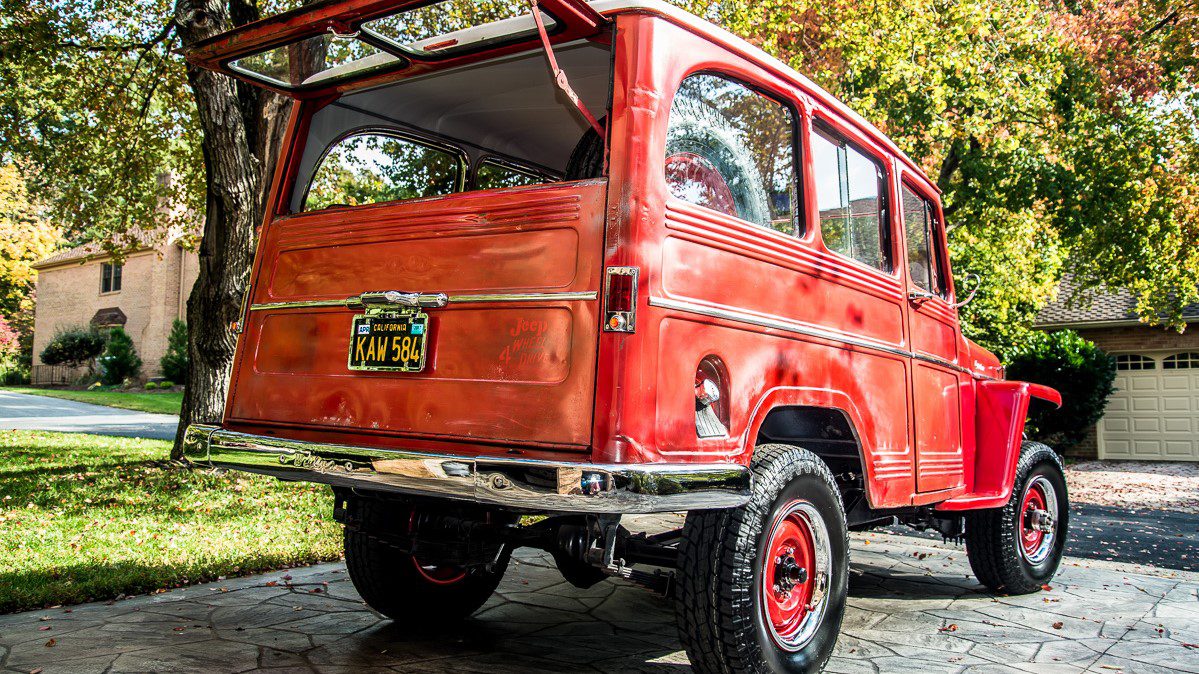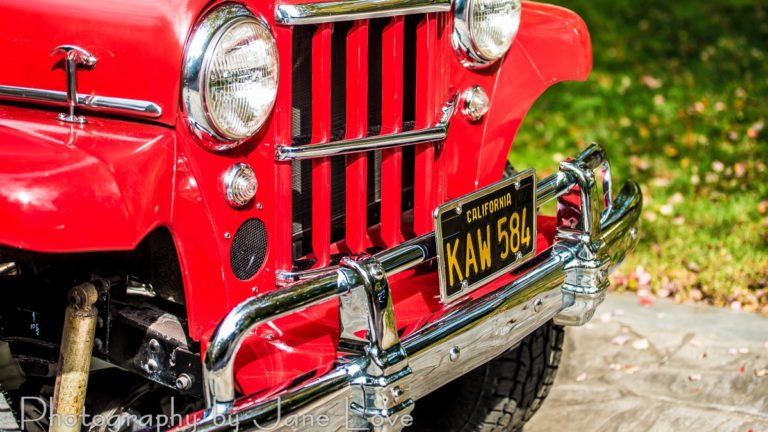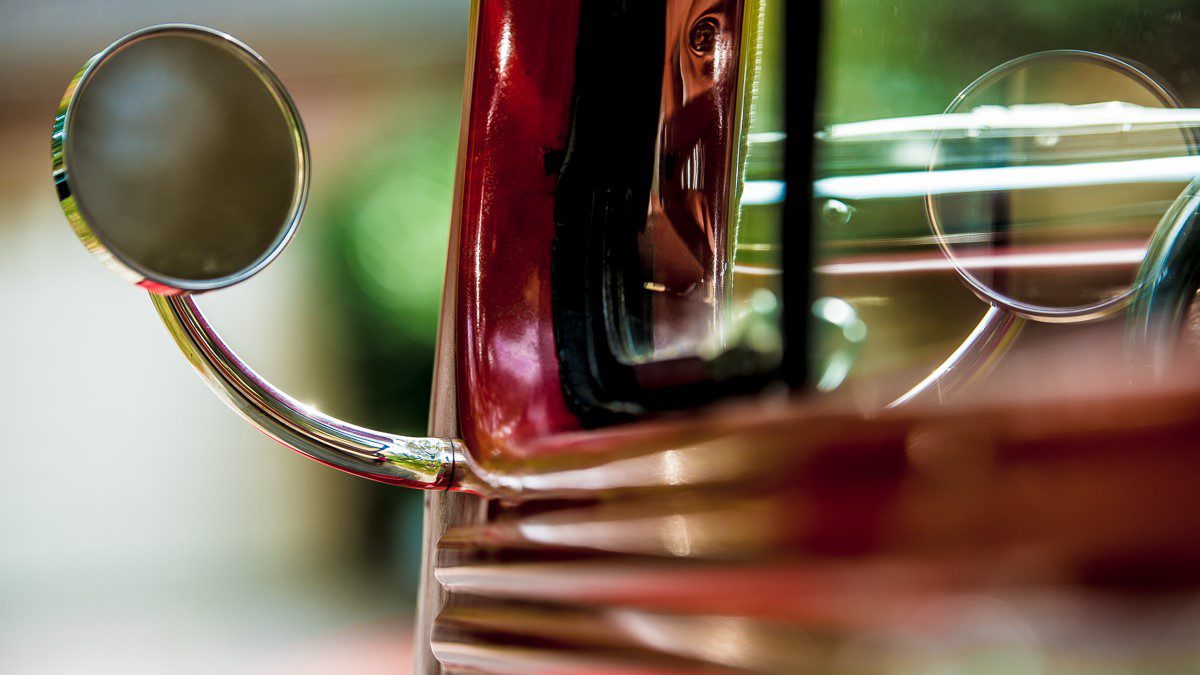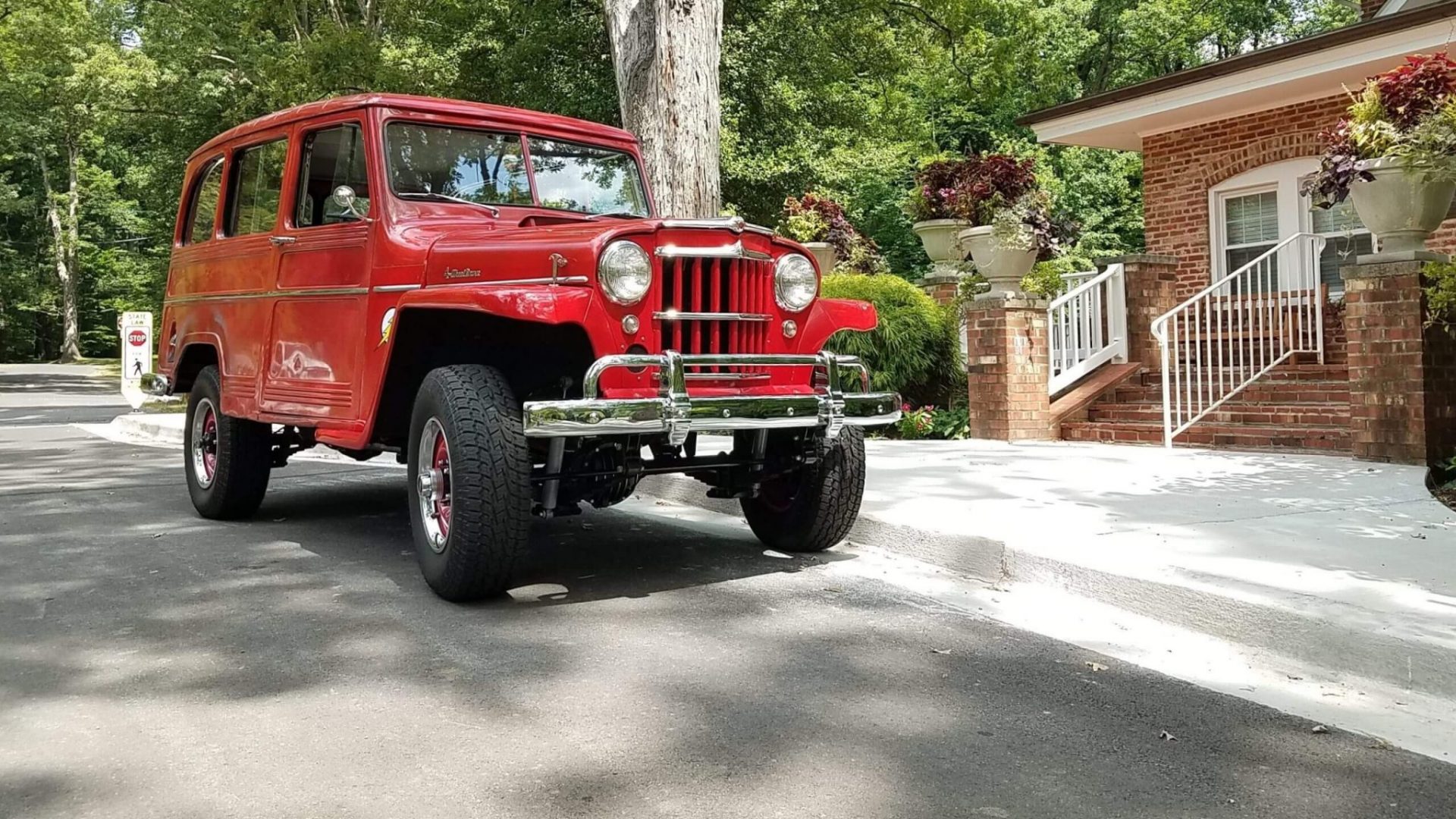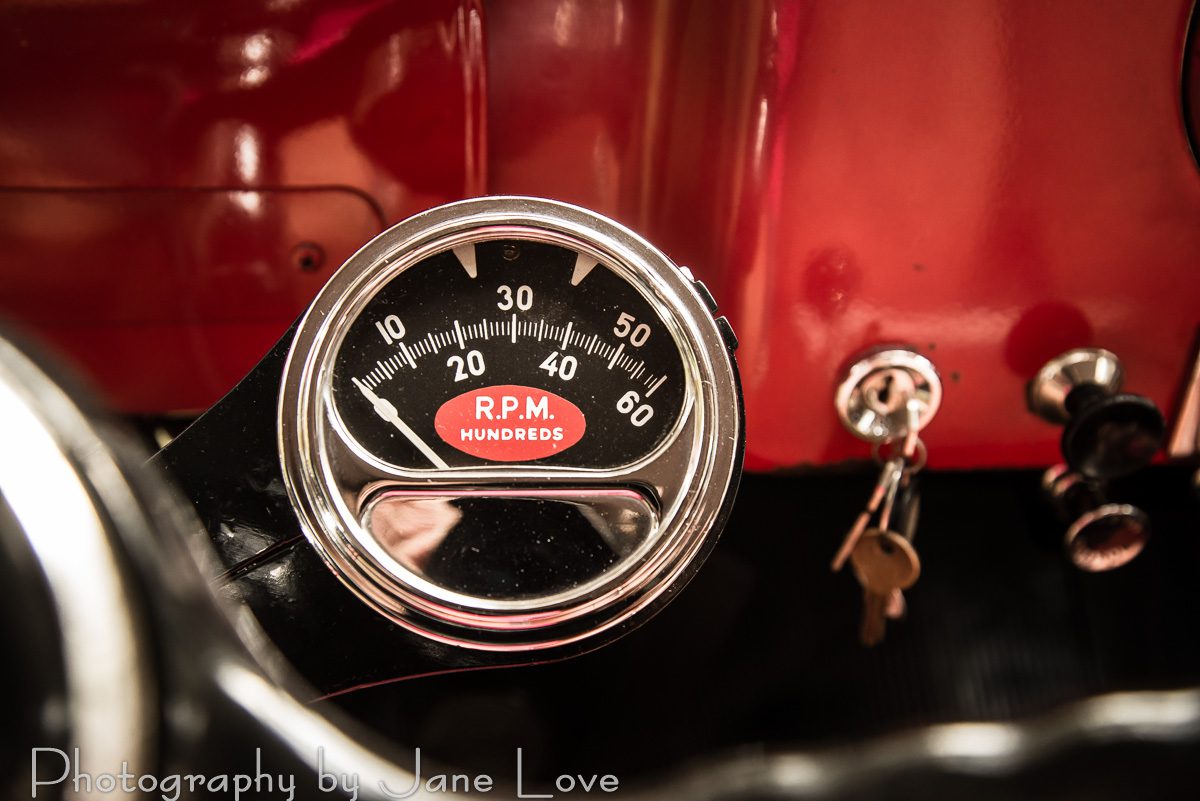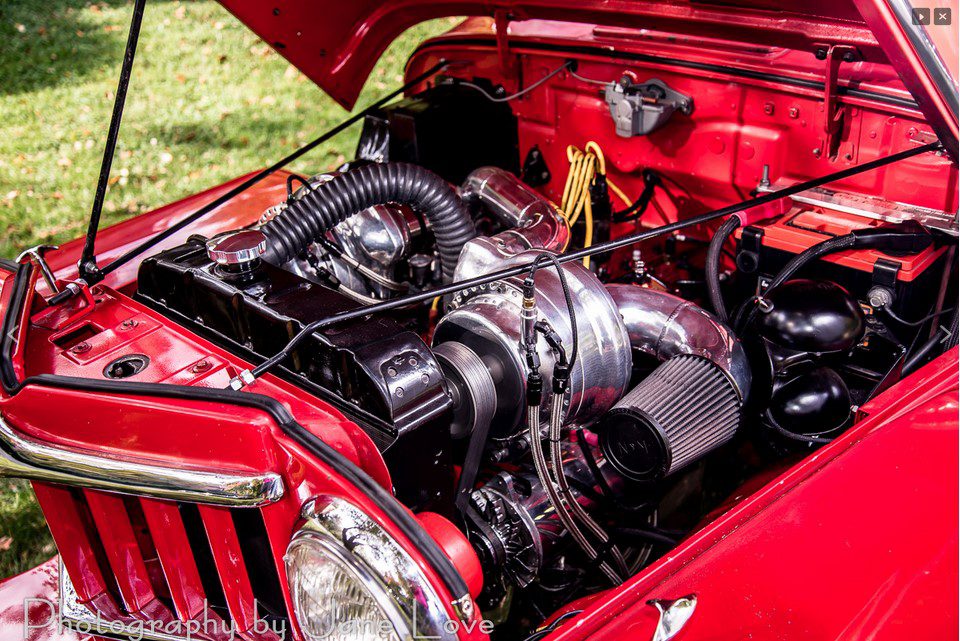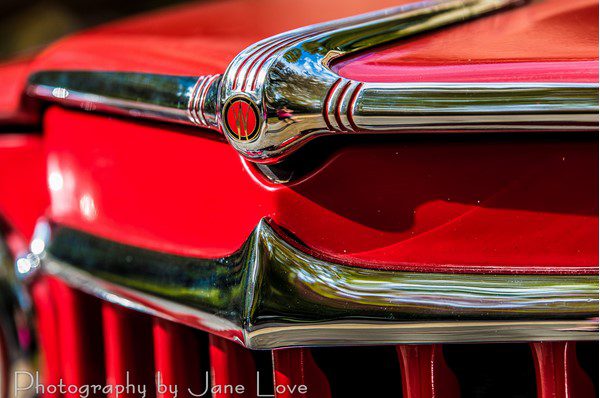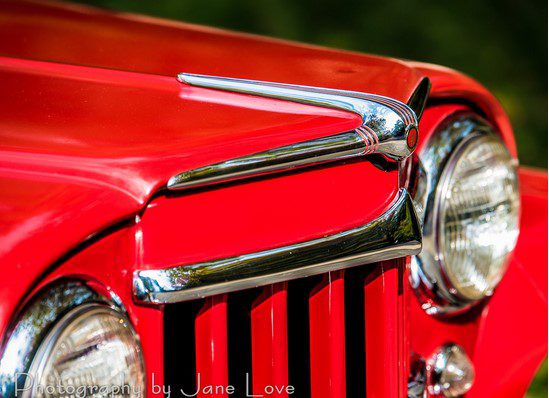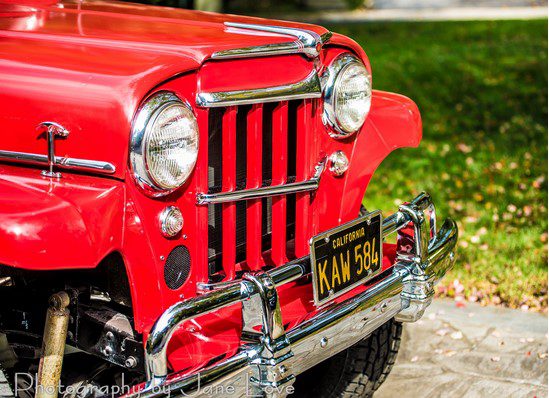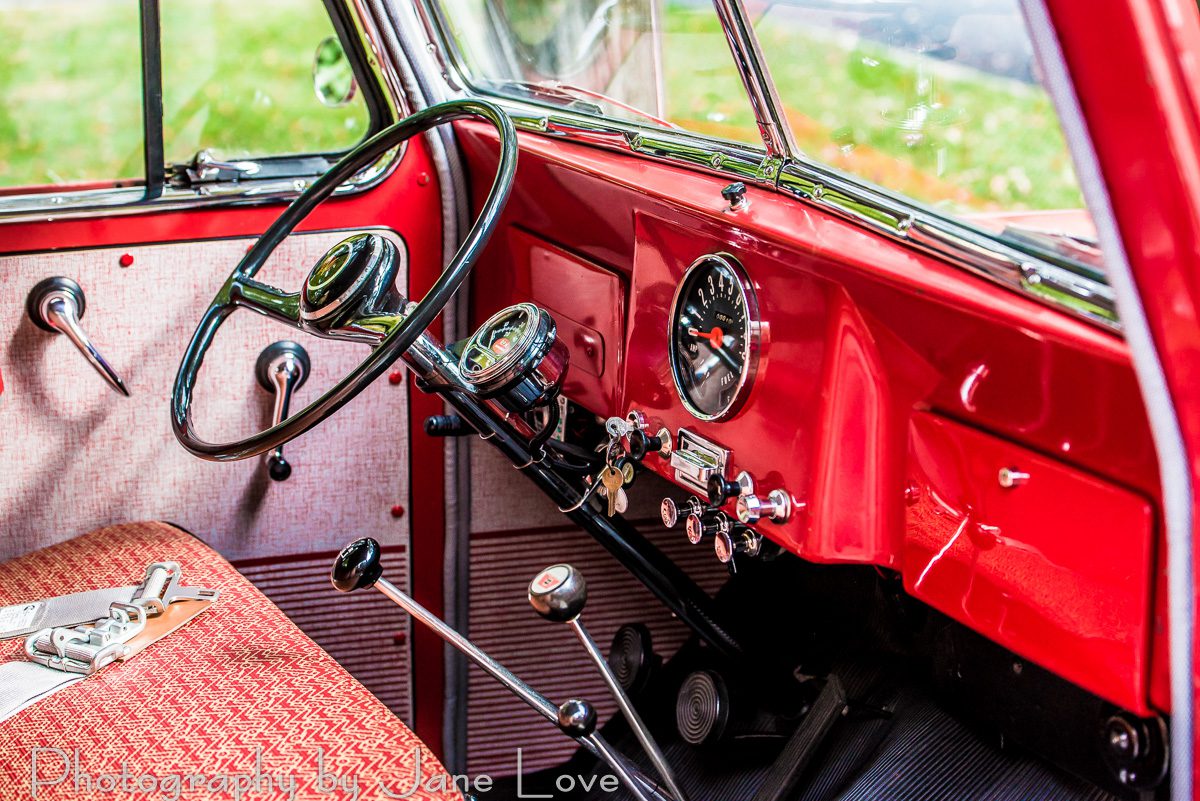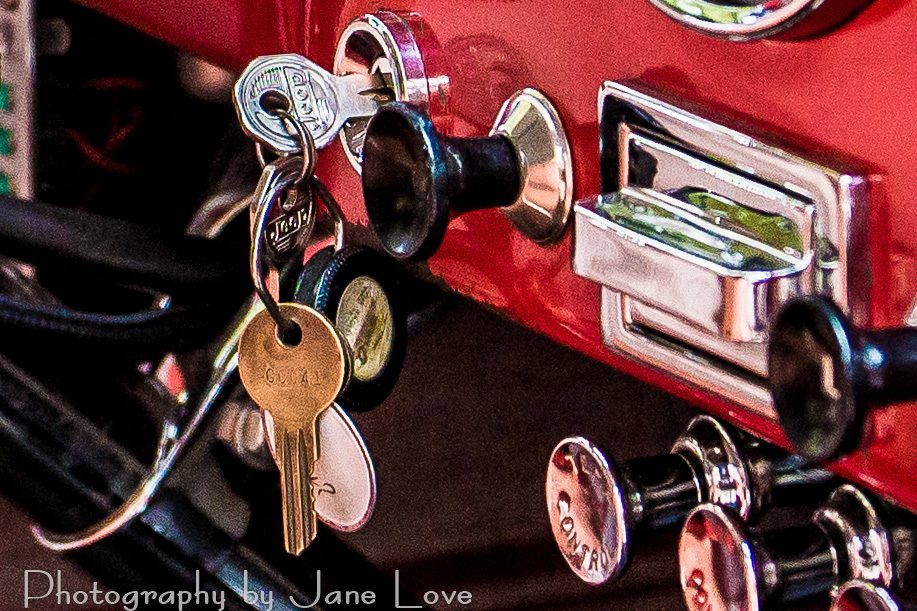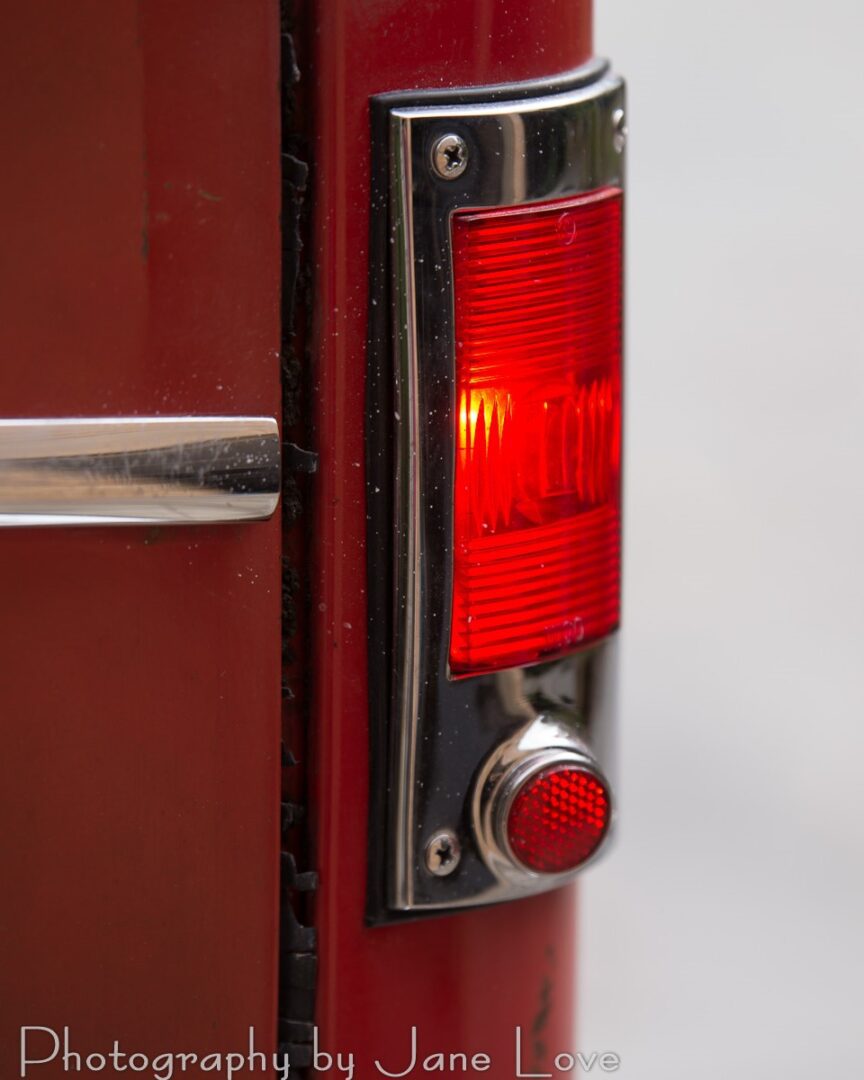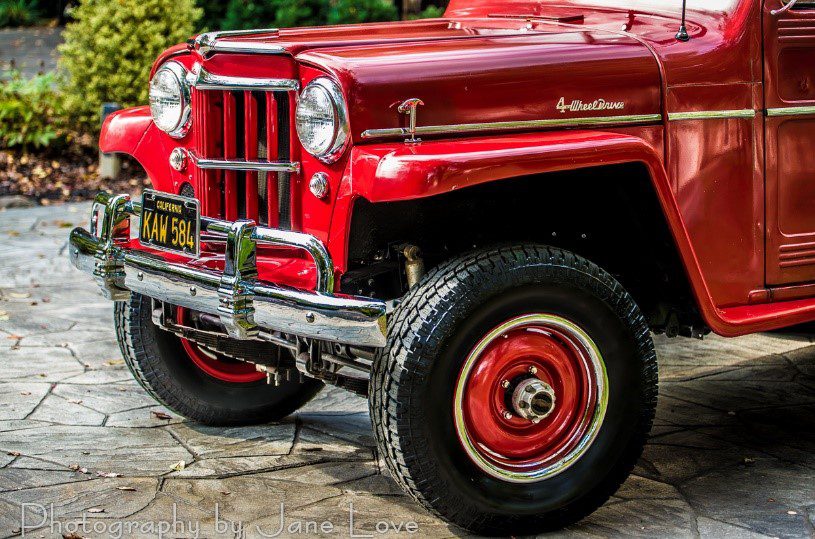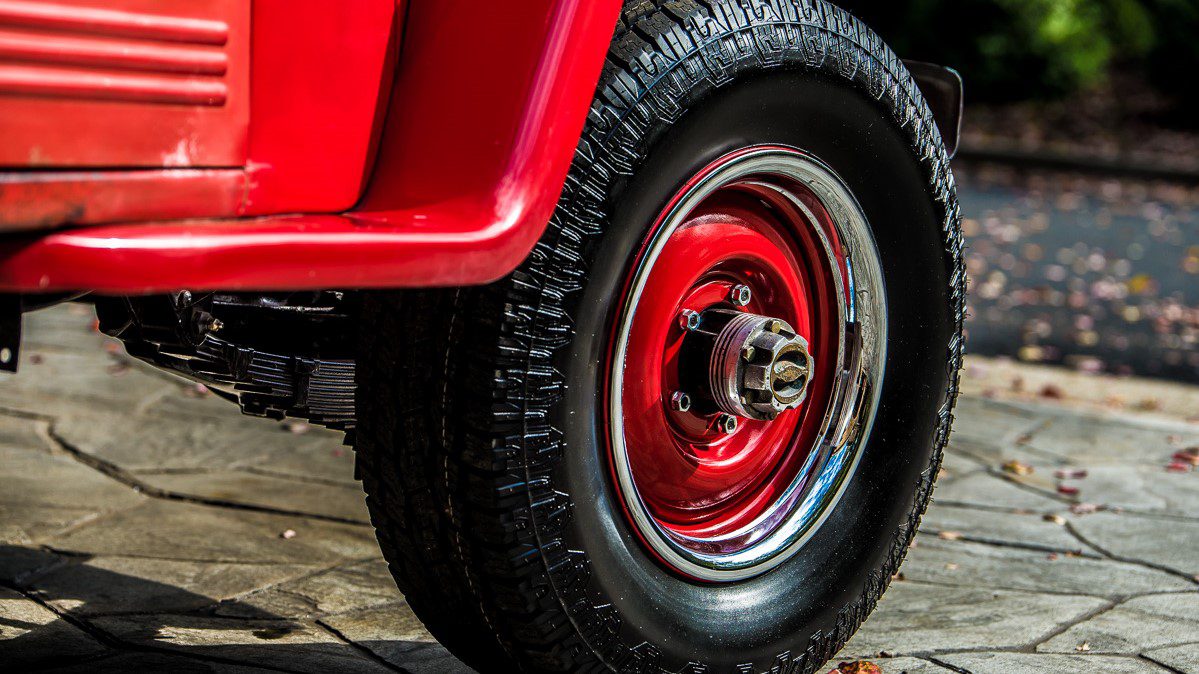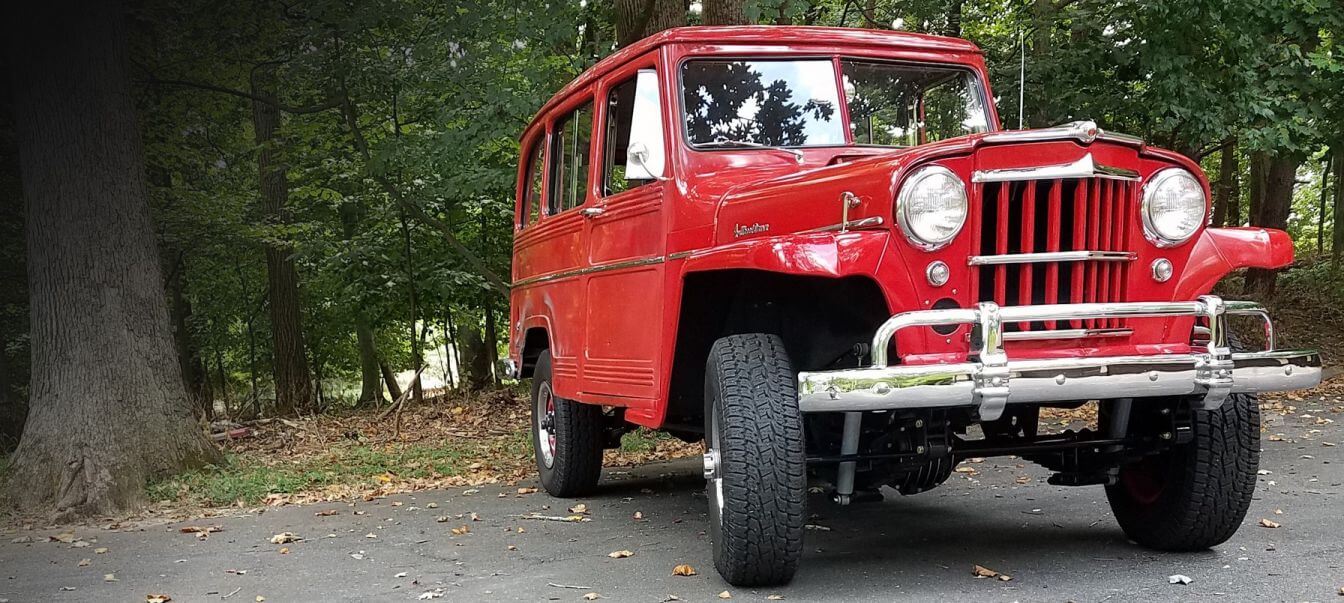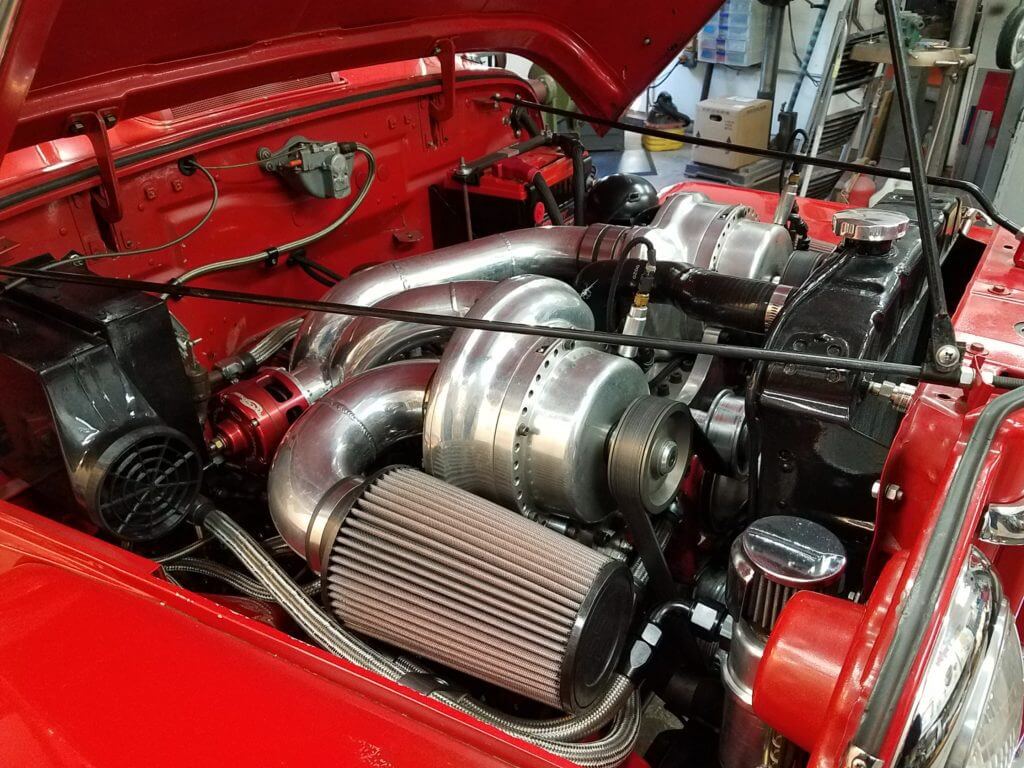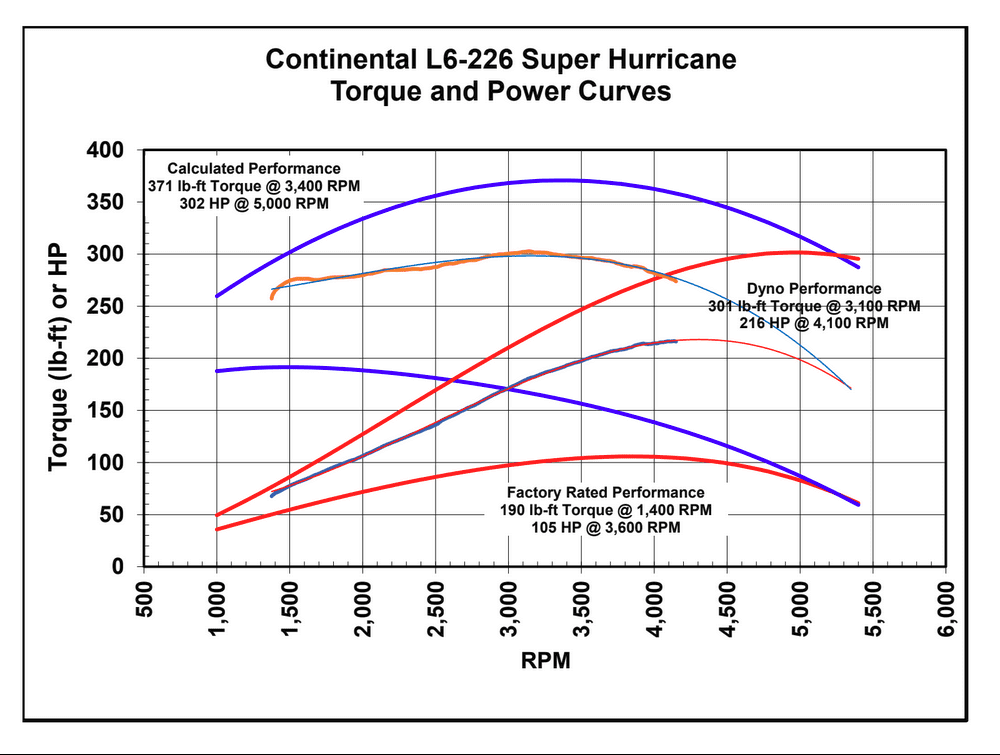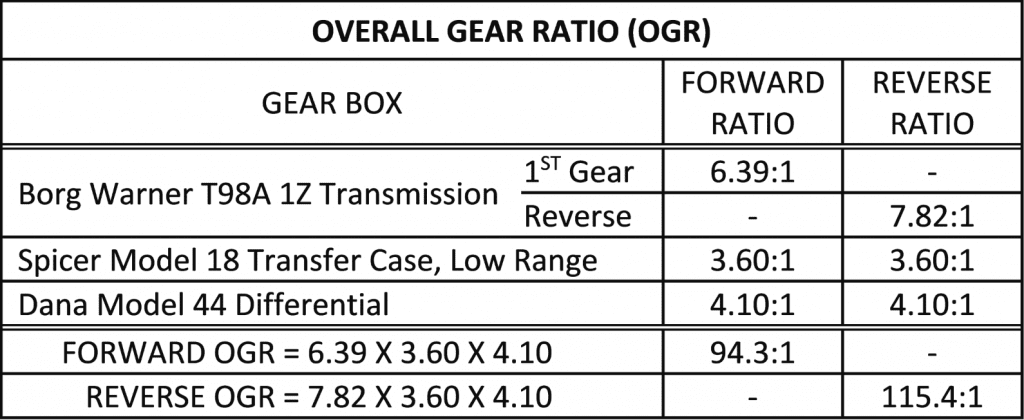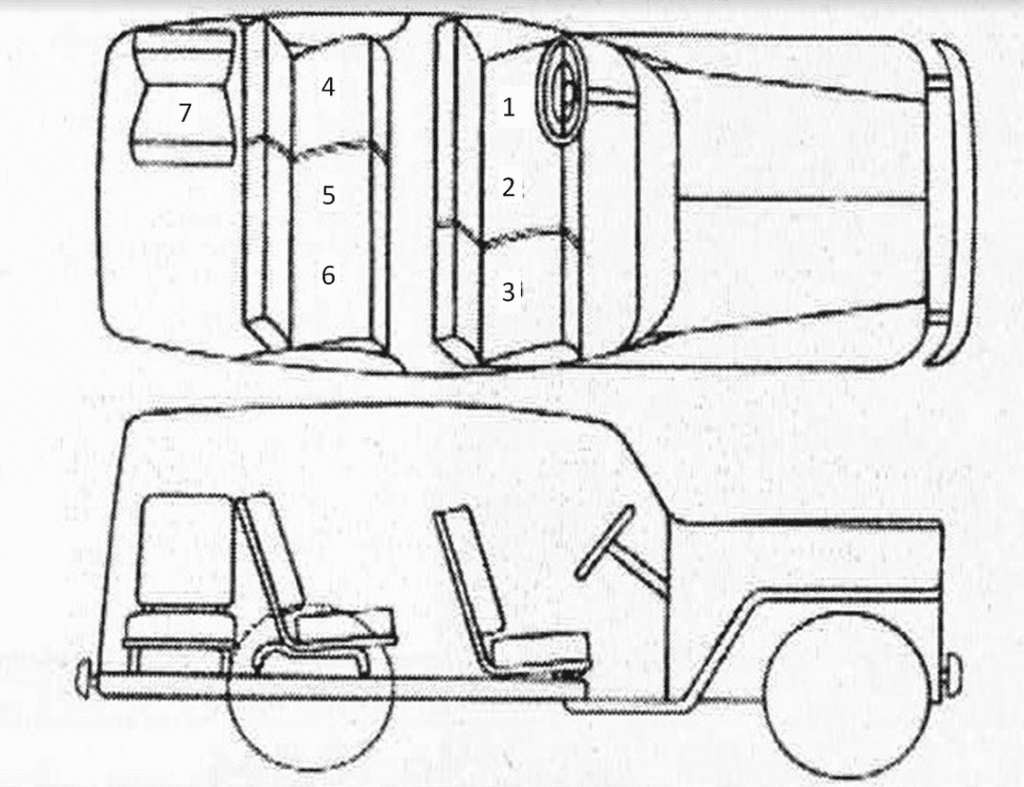Every drive a thrilling satisfaction
Fine tuned on the Clara Barton Parkway and Capital Beltway for an unforgettable driving experience felt every moment behind the wheel
ICONIC STYLING
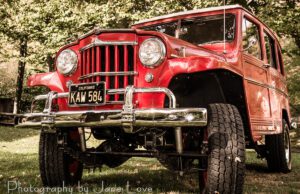
Ever since that day in 1977 when I first spotted my wagon parked on Mason Street in Vacaville, CA, I have been drawn to its iconic styling, simplicity, and ruggedness. I liked the way it looked and handled but, after realizing that the vehicle had untapped potential, I knew that I wanted something more. The result is a vintage vehicle blended with modern technology.
At first glance, this Willys Utility Wagon appears to be original. However, you may soon realize that something is different and that it is not an all-original vehicle. Noticing what is different or not original depends upon your familiarity with Willys Wagons.
Perhaps the first thing of note is that the vehicle has been used and does not have a fresh coat of paint. Sure, you noticed the paint, but how about the stance? Does it look more aggressive? Are those the original tires and wheels? Could it have a suspension or body lift installed?
EXPERIENCE UNCOMMON POWER
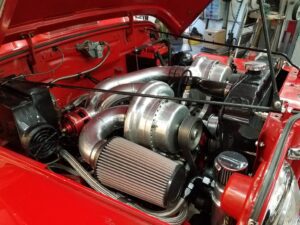
Opening the hood reveals the focal point of this project – the modified Willys Super Hurricane L6-226 engine. Two Paxton SN60 superchargers, connected to a polished aluminum intake, stuff air into the bored and stroked side-valve engine.
The engine’s forged SAE 1035 stroker crank stays put with the help of its custom massive steel main caps. Complementing this is a precision-ground, high-duration cam that lifts the oversized valves to an impressive 0.435 inch.
Sequential port fuel injection and coil-near-plug ignition are managed with a Holley Dominator engine control unit (ECU). A crankcase evacuation system reduces crankshaft windage losses and removes harmful blow-by gasses. The full-flow oil system minimizes friction and maximizes bearing life.
When not making boost, the open blow-off valve vents excess pressured air, creating a deafening swooshing sound. At wide open throttle, the distinctive whine of the two superchargers gets your attention. The end result is an engine that makes nearly three times the horsepower and more than twice the torque as the original engine.
DRIVER FOCUSED SIMPLICITY
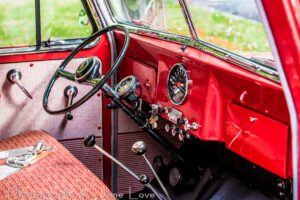
Moving to the passenger compartment, the driver-focused simply becomes obvious. All controls are conveniently placed and easy to operate.
The original Stewart Warner instrument cluster is front and center. Although the steering column mounted Sun RC60 football style tachometer is not a factory instrument, it serves as a distinctive nod to the automotive culture of the 1960s. Mounted under the dash, a vintage Stewart Warner mechanical oil pressure gauge discreetly contributes to the instrumentation package.
The windshield wipers, heater controls, and hand brake are factory originals, preserving the legacy of Willys design standards. The seat upholstery and interior body panels mirror their condition upon delivery to the dealership.
In terms of aesthetic updates, various components, once painted, now have a chrome-plated finish. This includes the steering column, shift levers, heater control mounting bracket, instrument cluster bezel, and window moldings. The chrome elements not only enhance the visual appeal but also highlight attention to detail that marries nostalgia with modern elegance.
FROM TOP TO BOTTOM
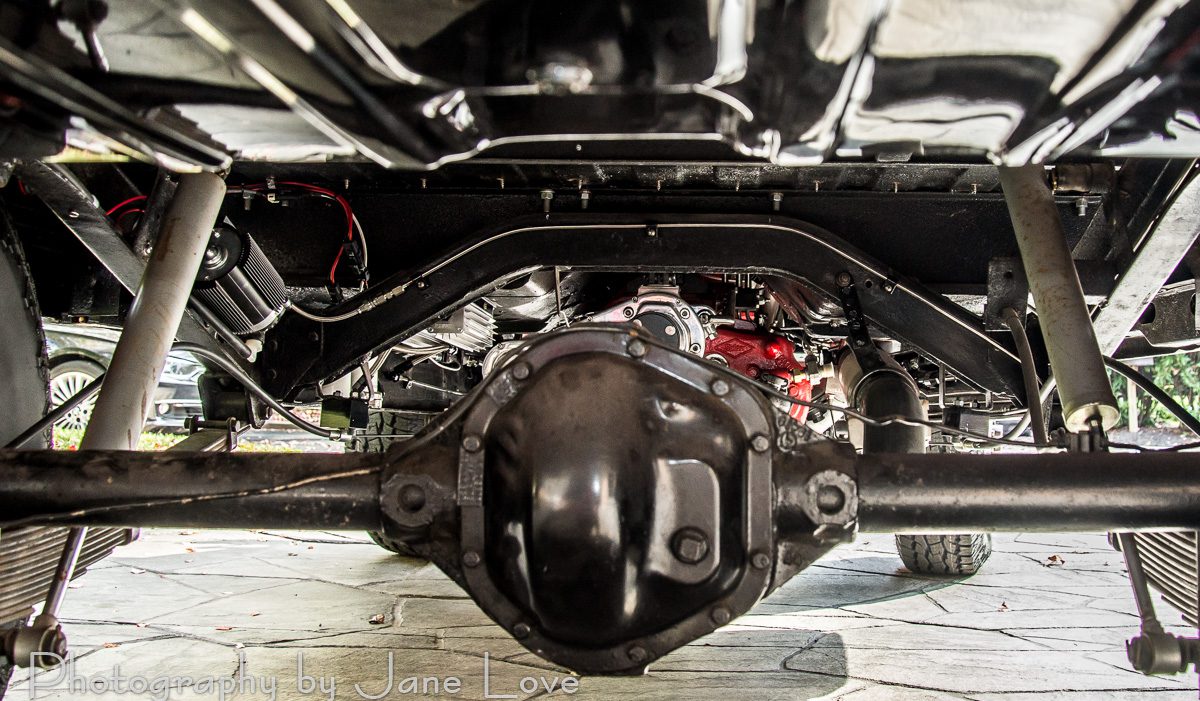
Looking under the vehicle, you will notice the same level of detail as see on the exterior and interior. The original Borg Warner T-90 transmission is replaced with a T-98 A1Z four-speed which results in a shorter rear drive shaft and longer front drive shaft. Behind the transmission are the Spicer Model 18 transfer case, Warn overdrive and Koenig Model 41, twin-stick PTO.
The water-methanal injection pump and the two supercharger oil cooling pumps are seen attached to the left frame rail. The steel brake lines, fuel lines and exhaust system are replaced with stainless steel components. Other noticeable deviations from original are:
- KYB gas-charged shock absorbers replace the OEM hydraulic shocks for improved highway handling and off-road performance.
- Finned aluminum TransDapt differential cover adds a subtle touch and matches those used on the front axle and transfer case.
UNEXPECTED TECHNOLOGY
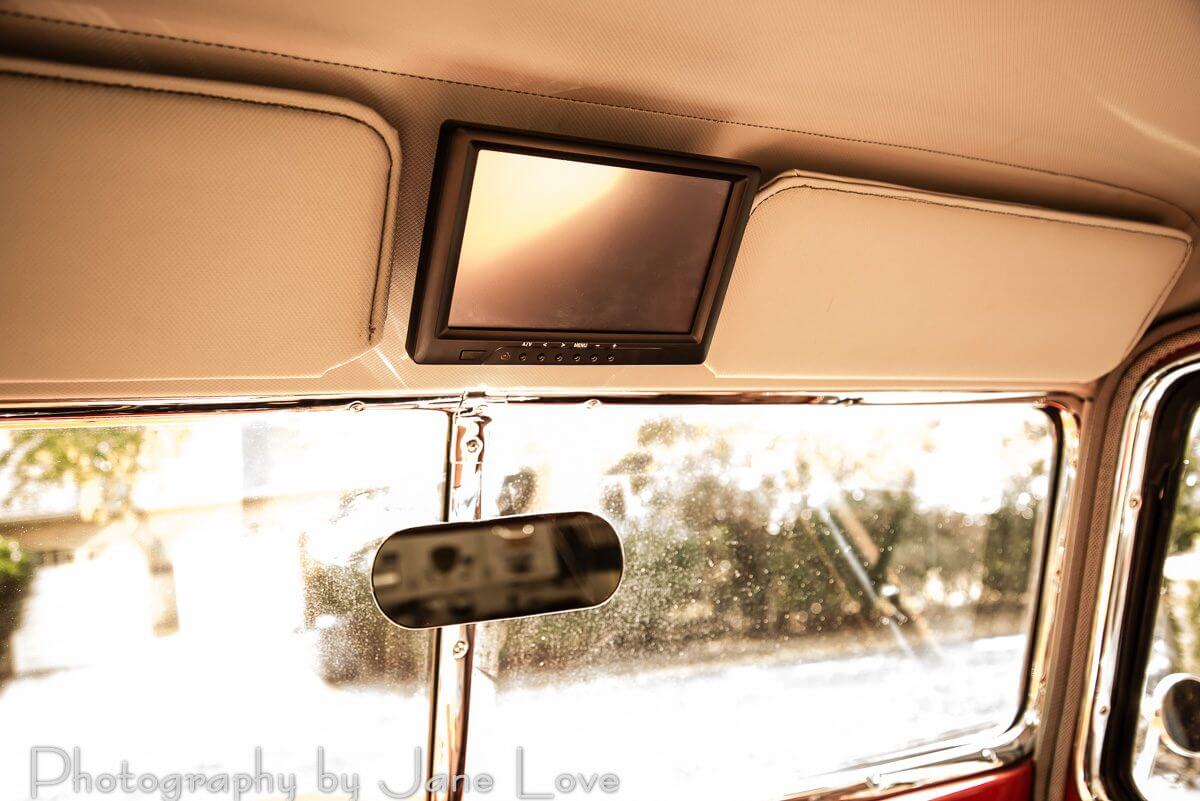
The overhead 7” touchscreen is the user interface (GUI) to access infotainment, navigation and other apps. Elsewhere in the cabin are:
- Holley Digital Dash operates on a CAN bus to provide access to the Holley Dominator EFI system. The 7” touchscreen is customized with a variety of gauge and indicator screens that can be programmed to display engine operating parameters.
- Intel 2.5 GHz Dual Core i3 LGA 1155 Mini ITX, configured with a 128 GB SS Drive and 8 GB of RAM, provides Bluetooth, USB, and WiFi interfaces.
- J & S Electronics SafeGuard knock controller uses sophisticated algorithms to control individual cylinder timing.
- Dakota Digital Electronic Cable Drive uses outputs from an electronic speed sensor to operate the OEM cable-driven speedometer.
- Samplex America 750 watt power inverter provides an in-vehicle 120VAC source.
- K-Type Thermocouple PID Controller amplifies the signals from the six exhaust gas
sensors and sends them to the Holley ECU for data logging. - 6-Port USB hub provides access to the vehicles ethernet network.

